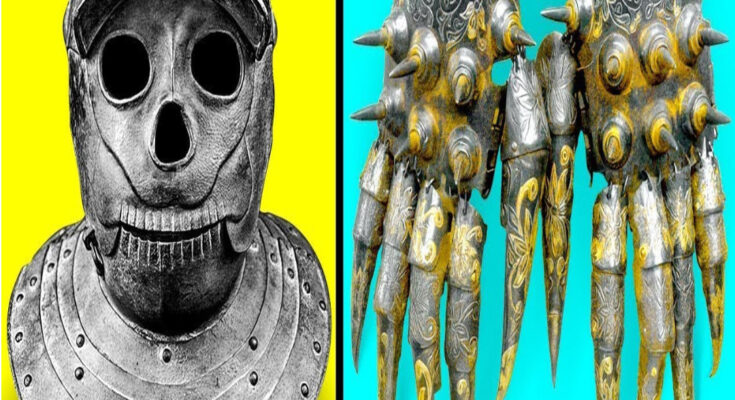When it comes to incredible armor throughout history and mythology, several standout examples come to mind:
1. **Greek Hoplite Armor**: The bronze armor worn by ancient Greek hoplites (foot soldiers) was both protective and iconic. It typically consisted of a bronze breastplate (cuirass), helmet, greaves (leg armor), and a large shield (hoplon).
2. **Samurai Armor (Yoroi)**: Traditional Japanese samurai armor, known as yoroi, was meticulously crafted from metal and leather. It featured intricate lacquer work and often had a distinctive helmet (kabuto) with a crest (maedate). The craftsmanship and cultural significance of samurai armor make it legendary.
3. **Medieval Plate Armor**: Developed in Europe during the Middle Ages, plate armor represented the pinnacle of defensive technology for knights and nobles. Made from interlocking metal plates, it provided excellent protection while allowing mobility through articulated joints.
4. **Roman Lorica Segmentata**: This segmented armor was used by Roman legionaries during the early Empire. It consisted of broad iron strips joined together with leather straps, offering both flexibility and durability.
5. **Norse Viking Armor**: Vikings used a variety of armor types, including chainmail (byrnies) and occasionally leather or scale armor. Their shields were often reinforced with iron, and their helmets ranged from simple conical shapes to more elaborate designs.
6. **Fantasy Armors**: In the realm of fiction and fantasy, armors like those worn by characters such as Iron Man, Master Chief from Halo, or even the mystical armor of characters like Wonder Woman or Thor’s Asgardian armor, are iconic and visually stunning.
Each of these armors not only served a practical purpose in protection but also became symbols of the cultures and societies that produced them, embodying both craftsmanship and the warrior spirit of their times.



